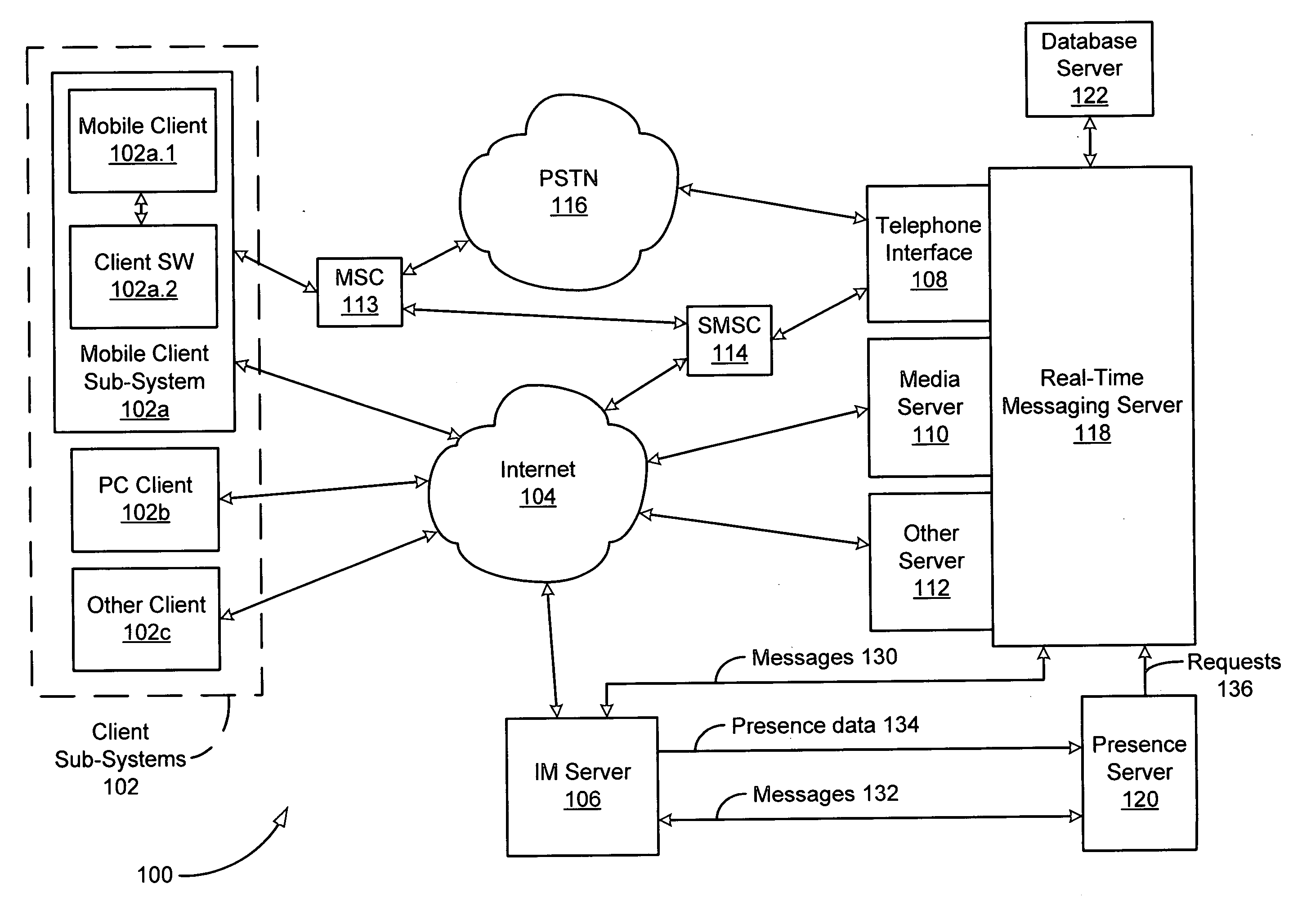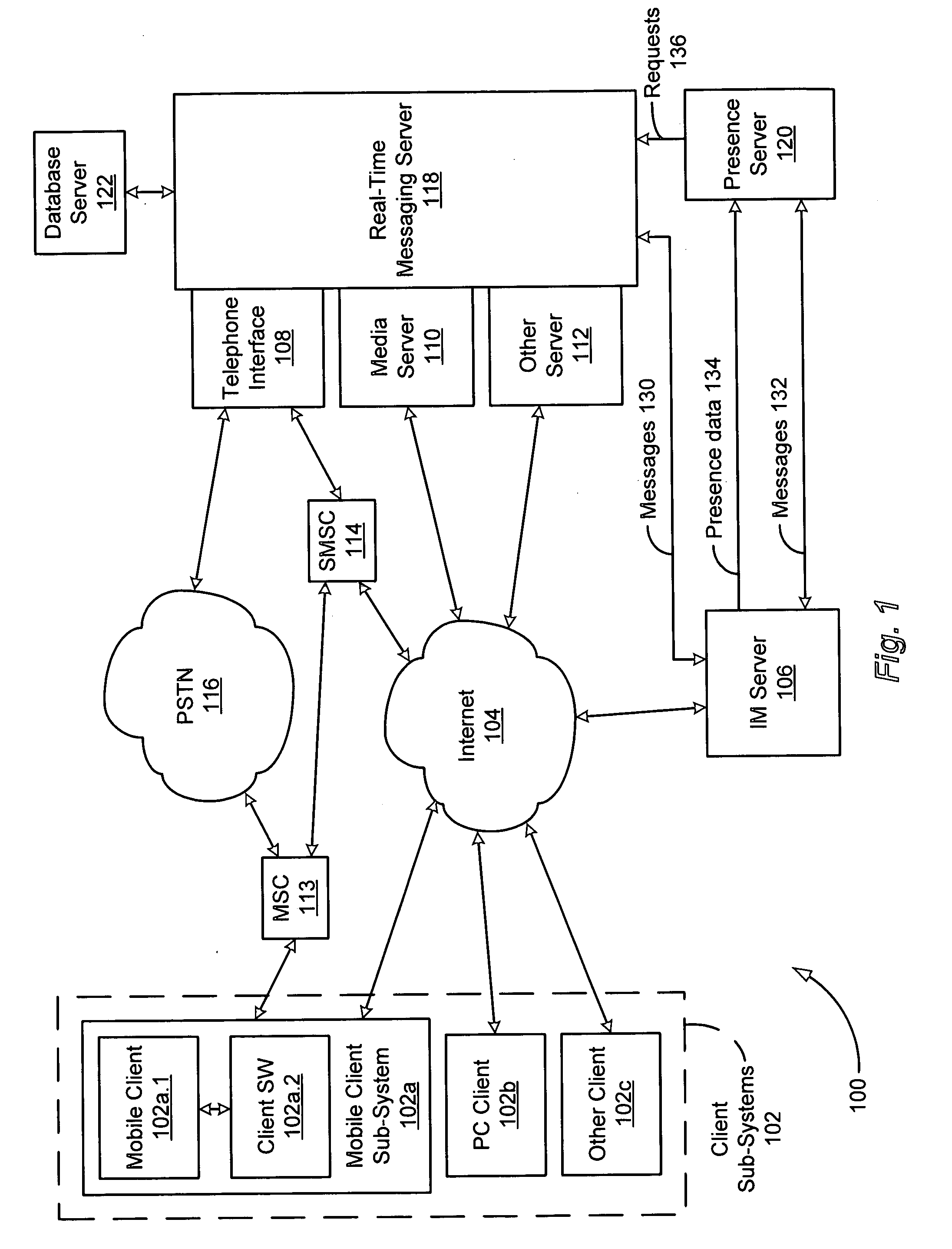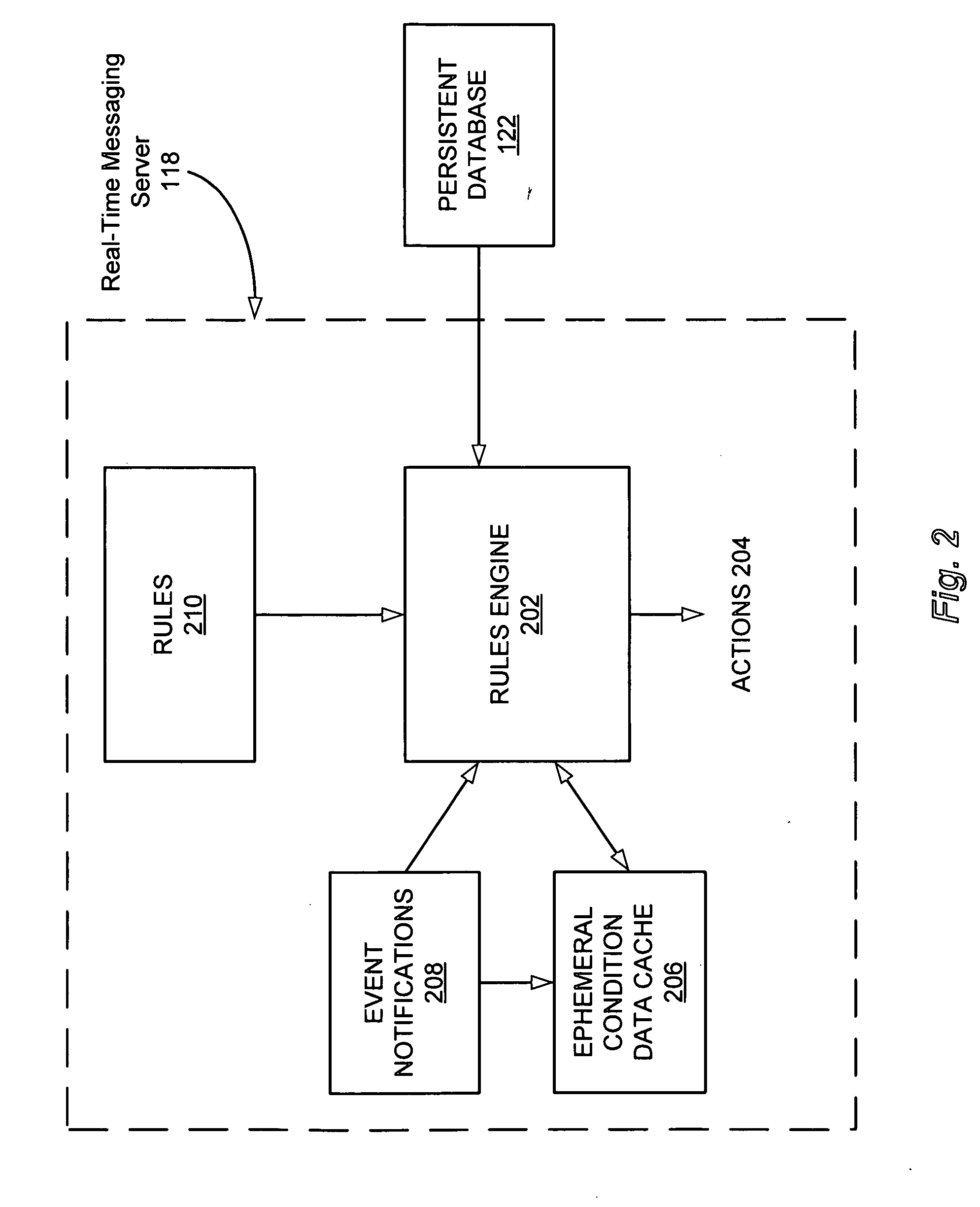[0013] In the event at least some of the desired meeting participants are unavailable, the real-time messaging server can provide the user of the mobile telephone with a choice of (1) waiting until all of the desired meeting participants are on-line and available, (2) proceeding with the convening of the on-line meeting between the user of the mobile telephone and only the desired meeting participants who are currently on-line and available, or (3) withdrawing his or her request for the on-line meeting. In one embodiment, in the event one or more of the designated meeting participants are unavailable, the real-time messaging server provides the user of the mobile telephone with one or more names of suggested stand-ins for the unavailable users. The user of the mobile telephone can indicate his or her selection among the various choices provided by the real-time messaging server by transmitting at least one SMS message, or by providing at least one voice or DTMF input, to the real-time messaging server.
[0014] In still another configuration, the mobile telephone may provide data connectivity, and may have specialized application software (including instant messaging (IM) application software) loaded thereon and logged onto the instant messaging server. Such specialized application software may allow the user of the mobile telephone to generate a “buddy list”, and may provide a representation of the buddy list on a display of the mobile telephone. The representation of the buddy list on the telephone display may include an indication of the on-line presence and availability status of each user on the buddy list. The specialized application software may also allow the user of the mobile telephone to indicate one or more desired on-line meeting participants by selecting them from the list on the telephone display using a telephone keypad or any other suitable input device such as a stylus, to input the topic of the on-line meeting via the keypad, and to request the on-line meeting with the designated meeting participants by selecting a command from a menu via the keypad, thereby providing the names of the designated meeting participants and optionally the topic of the meeting to the real-time messaging server. Next, in conjunction with the instant messaging server, the real-time messaging server may determine the on-line presence and availability status of each of the designated meeting participants, and may either convene the on-line meeting or provide a number of choices of action to the mobile telephone user, as described above.
[0015] In another mode of operation, the mobile telephone is operative to receive an invitation from the real-time messaging server to join an on-line meeting or teleconference with at least one other user of a mobile or non-mobile device. As in the first mode of operation described above, several configurations of the mobile telephone are possible. In one configuration, the mobile telephone is operative to exchange voice messages and short message service (SMS) messages with the real-time messaging server, and to exchange SMS messages with the instant messaging server. For example, the mobile telephone may be enabled for SMS forwarding, thereby allowing the mobile telephone to receive the meeting invitation from the real-time messaging server via at least one SMS message. In the event the mobile telephone network is configured to provide an indication of the presence of the mobile telephone on the network to the real-time messaging server, the real-time messaging server can employ this information to determine the on-line presence of the user of the mobile telephone before transmitting the meeting invitation to that user. Otherwise, the real-time messaging server effectively assumes that the user of the mobile telephone is present and on-line, so long as the mobile telephone is configured to receive messages from the real-time messaging server. For example, the mobile telephone may be SMS-enabled, or may be configured to maintain a data connection to the real-time messaging server. In addition, the user of the mobile telephone can change his or her availability status by transmitting at least one SMS message or “short code” to the real-time messaging server. The real-time messaging server provides the meeting invitation to the user of the mobile telephone via at least one SMS message, which includes the name of the user requesting the on-line meeting and an optional indication of the topic of the meeting. The mobile telephone user can accept the invitation to join the on-line meeting by transmitting at least one SMS message to the real-time messaging server, after which the real-time messaging server may convene the on-line meeting between the mobile telephone user and the other meeting participant(s). Alternatively, the meeting invitation may include a telephone number associated with the telephone interface of the real-time messaging server, and the user of the mobile telephone may accept the invitation to join the on-line meeting by “dialing” the telephone number and by providing at least one voice or DTMF input to the real-time messaging server. If the mobile telephone and the other mobile and / or non-mobile devices participating in the on-line meeting have application software loaded thereon that provides voice over Internet protocol (VoIP) functionality, then the real-time messaging server may convene a voice conference between the users of the respective mobile and / or non-mobile devices.
 Login to View More
Login to View More  Login to View More
Login to View More 


